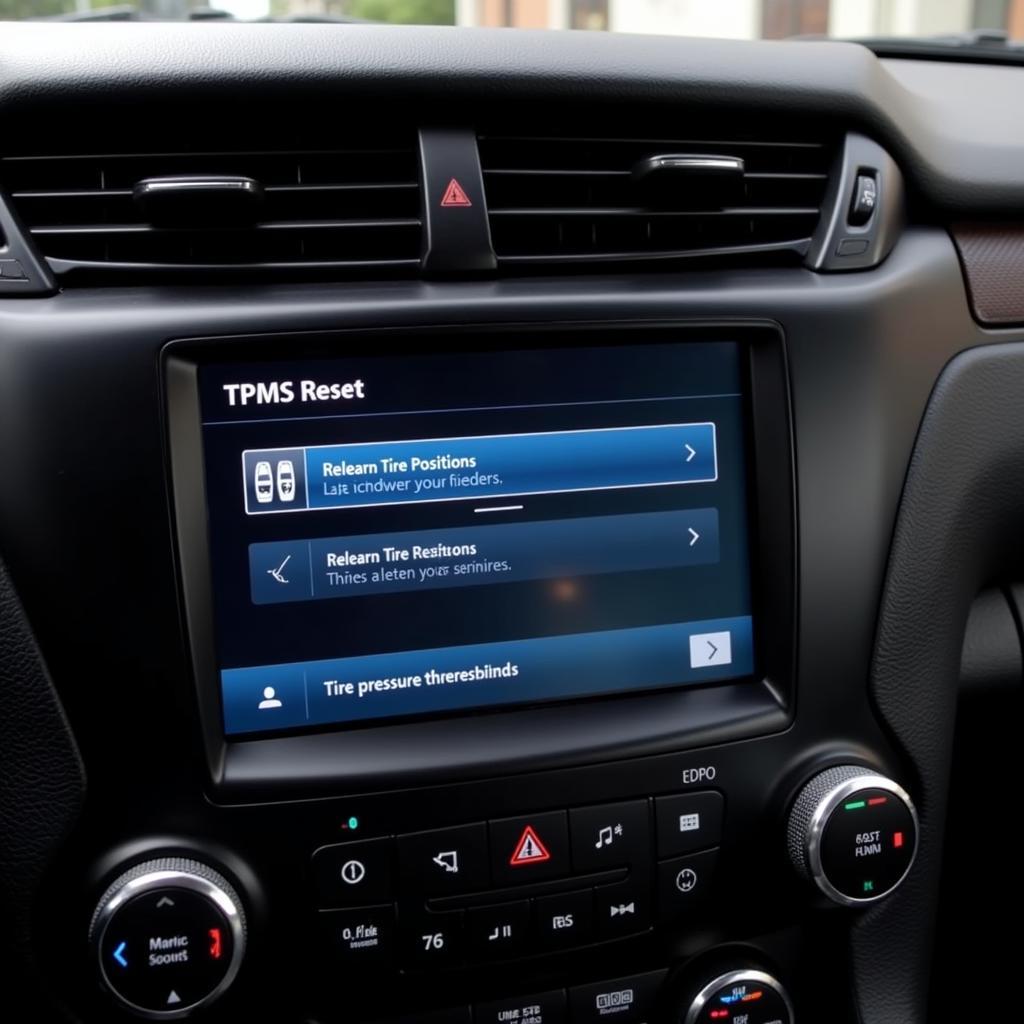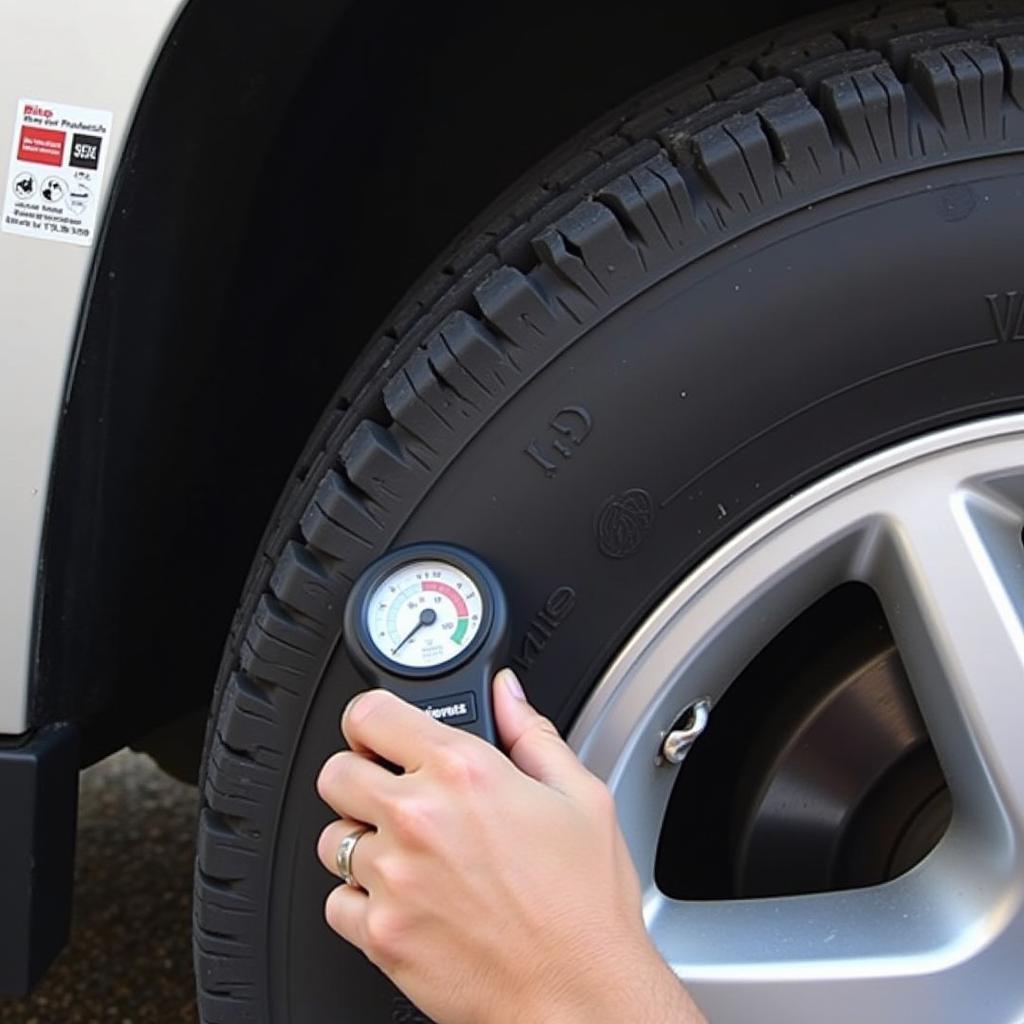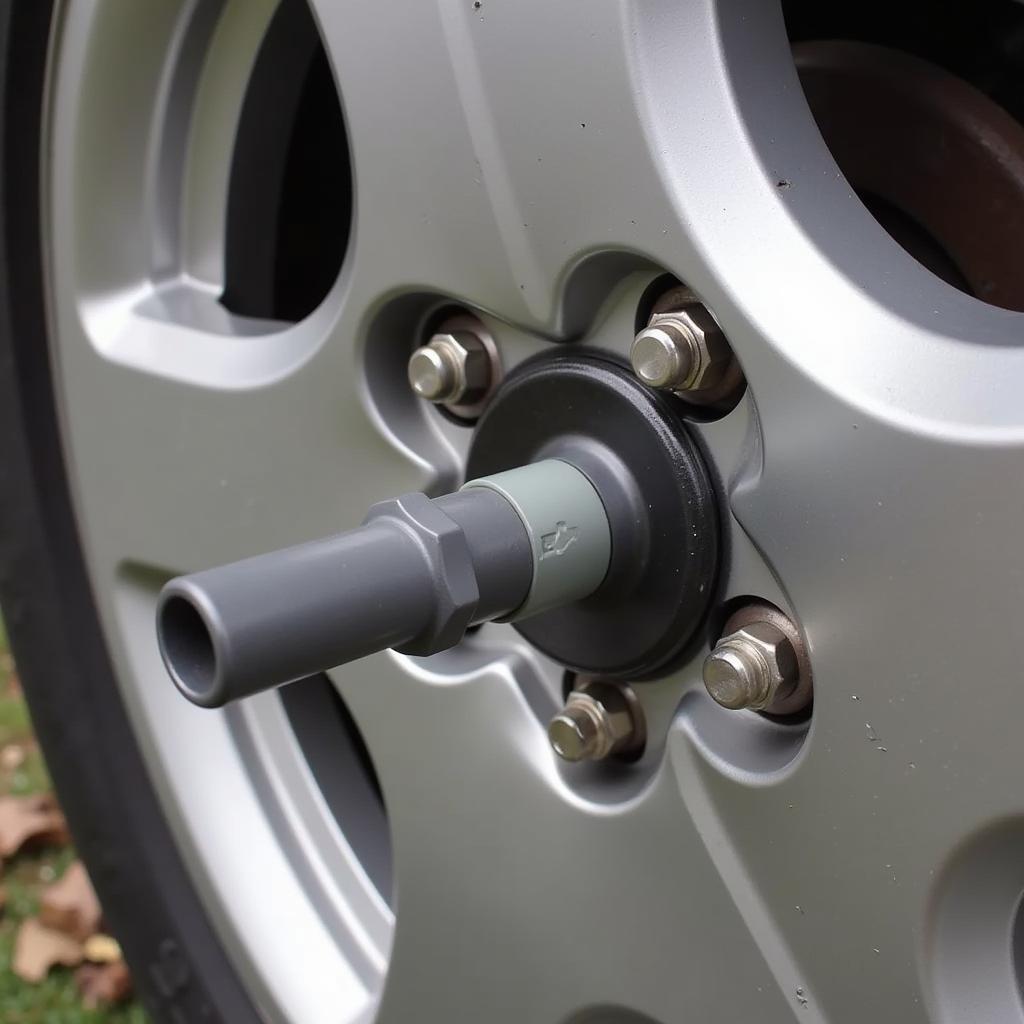Resetting your Chevy Tahoe’s Tire Pressure Monitoring System (TPMS) can seem daunting, especially if you’re missing your key fob. But don’t worry, it’s often possible to reset the TPMS without it. This guide will walk you through different methods to try, from the simplest to slightly more involved solutions for your Tahoe.
Understanding Your Tahoe’s TPMS
The TPMS is a vital safety feature, alerting you to low tire pressure, which can affect handling, fuel economy, and tire lifespan. While the key fob plays a role in some TPMS functions, like relearning sensor positions after a tire rotation, it’s not always essential for a simple reset. Understanding your Tahoe’s specific year model will be helpful, as the reset process can vary slightly.
Resetting TPMS with the Driver Information Center (DIC)
Many Tahoe models allow TPMS resets through the DIC. This is generally the easiest method and doesn’t require the key fob. Locate the DIC buttons on your steering wheel, typically marked with arrows or words like “Menu,” “Set/Reset,” and “Trip.” Navigate to the TPMS settings within the DIC menu. Look for options like “Relearn Tire Positions” or “Reset TPMS.” Follow the on-screen prompts, which usually involve driving at a specific speed for a certain distance to allow the sensors to recalibrate.
 Tahoe DIC TPMS Reset Screen
Tahoe DIC TPMS Reset Screen
Using the TPMS Reset Button (If Equipped)
Some Tahoes have a dedicated TPMS reset button, often located under the steering wheel or within the glove compartment. Consult your owner’s manual for the exact location. With the ignition on, press and hold the reset button until the TPMS light flashes a few times, indicating a successful reset.
Resetting TPMS Through Inflation (Indirect TPMS)
Older Tahoes might have an indirect TPMS that relies on the ABS system, not individual tire sensors. In this case, inflate all tires to the recommended pressure listed on the sticker inside the driver’s side doorjamb. Then, drive the vehicle for a short distance. The system should automatically recalibrate based on the wheel speed data.
 Inflating Tahoe Tires to Recommended Pressure
Inflating Tahoe Tires to Recommended Pressure
When to Seek Professional Help
If none of these methods work, there might be a deeper issue with your TPMS, such as a faulty sensor or a problem with the TPMS module. In these cases, it’s best to consult a qualified mechanic or tire specialist. They have the diagnostic tools and expertise to pinpoint and fix the problem efficiently.
Common TPMS Issues and Solutions
Beyond a simple reset, TPMS problems can arise from various factors. Low battery life within the sensors is a common culprit, usually requiring sensor replacement. Physical damage to the sensor or valve stem can also occur. Additionally, extreme temperatures can sometimes temporarily affect sensor accuracy.
“Regular tire maintenance, including checking and adjusting pressure, can prevent many TPMS issues,” advises John Smith, Certified Automotive Technician at Smith’s Auto Repair. “It’s a simple step that can save you time, money, and potential headaches down the road.”
 Chevrolet Tahoe TPMS Sensor
Chevrolet Tahoe TPMS Sensor
Conclusion: Resetting Your Tahoe’s TPMS – You’ve Got Options
Resetting your Tahoe’s TPMS without a Key Fob is achievable in most cases. Whether it’s through the DIC, a dedicated reset button, or the inflation method, a solution is usually at hand. Remember to consult your owner’s manual for model-specific instructions. If you encounter persistent problems, don’t hesitate to seek professional assistance.
FAQ
- How often should I check my tire pressure? Monthly is recommended.
- How long do TPMS sensors last? Typically 5-10 years.
- Can I replace a TPMS sensor myself? It’s possible, but requires specific tools and some technical know-how.
- What does the TPMS light look like? It’s usually a horseshoe shape with an exclamation point.
- Why is my TPMS light flashing? This often indicates a malfunctioning sensor.
- How much does it cost to replace a TPMS sensor? Costs can vary, but typically range from $50-$200 per sensor, including installation.
- What happens if I ignore the TPMS light? You risk reduced fuel efficiency, tire damage, and potential safety hazards.
Other Related Articles
- Understanding Your Car’s Dashboard Warning Lights
- The Importance of Regular Tire Maintenance
- Troubleshooting Common Car Problems
Need further assistance? Contact us via WhatsApp: +1(641)206-8880, Email: [email protected] or visit our workshop at 123 Maple Street, New York, USA 10001. Our customer service team is available 24/7.

Leave a Reply